
-
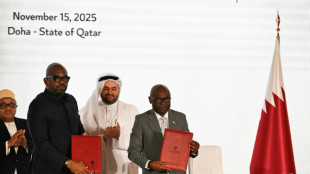 M23, DR Congo sign new peace roadmap in Doha
M23, DR Congo sign new peace roadmap in Doha
-
Estevao, Casemiro on target for Brazil in Senegal win

-
 Ford steers England to rare win over New Zealand
Ford steers England to rare win over New Zealand
-
Massive march in Brazil marks first big UN climate protest in years
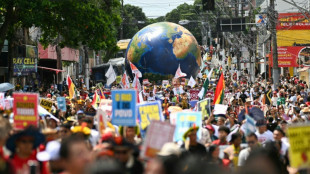
-
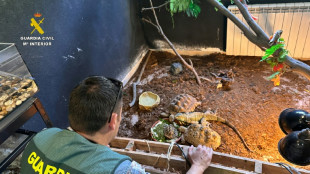 Spain rescues hundreds of exotic animals from unlicensed shelter
Spain rescues hundreds of exotic animals from unlicensed shelter
-
Huge fire sparked by explosions near Argentine capital 'contained'
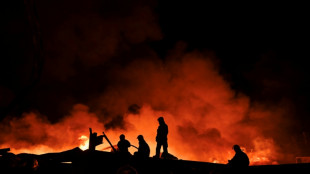
-
 South Africa defy early red card to beat battling Italy
South Africa defy early red card to beat battling Italy
-
Sinner beats De Minaur to reach ATP Finals title match

-
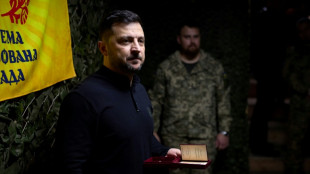 Zelensky vows overhaul of Ukraine's scandal-hit energy firms
Zelensky vows overhaul of Ukraine's scandal-hit energy firms
-
South Africa defy early red card to beat Italy

-
 Alex Marquez claims Valencia MotoGP sprint victory
Alex Marquez claims Valencia MotoGP sprint victory
-
McIlroy shares lead with Race to Dubai title in sight

-
 Climate protesters rally in Brazil at COP30 halfway mark
Climate protesters rally in Brazil at COP30 halfway mark
-
Spike Lee gifts pope Knicks jersey as pontiff meets film stars
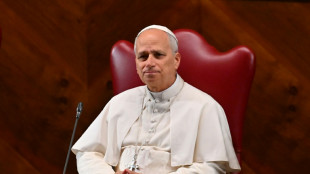
-
 BBC caught in crossfire of polarised political and media landscape
BBC caught in crossfire of polarised political and media landscape
-
'Happy' Shiffrin dominates in Levi slalom for 102nd World Cup win

-
 Palestinian national team on 'mission' for peace in Spain visit
Palestinian national team on 'mission' for peace in Spain visit
-
Brazilian 'Superman' cheers child cancer patients in Ghana

-
 India close in on win over South Africa after Jadeja heroics
India close in on win over South Africa after Jadeja heroics
-
Huge explosions rock industrial area near Argentina's capital
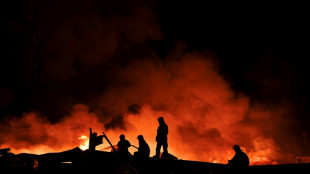
-
 Bezzecchi takes pole for Valencia sprint and MotoGP
Bezzecchi takes pole for Valencia sprint and MotoGP
-
Dominant Shiffrin leads after first slalom run in Levi

-
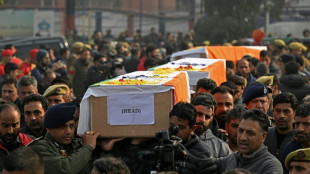 Nine killed in accidental explosion at Indian Kashmir police station
Nine killed in accidental explosion at Indian Kashmir police station
-
Climate protesters to rally at COP30's halfway mark

-
 Fighting South Africa lose Rickelton after India 189 all out
Fighting South Africa lose Rickelton after India 189 all out
-
Harmer leads South Africa fightback as India 189 all out

-
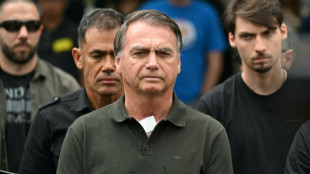 Prison looms for Brazil's Bolsonaro after court rejects his appeal
Prison looms for Brazil's Bolsonaro after court rejects his appeal
-
EU bows to pressure on loosening AI, privacy rules
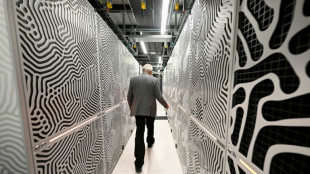
-
 India close in on lead despite South African strikes
India close in on lead despite South African strikes
-
Curry's 49 points propel Warriors in 109-108 win over Spurs

-
 NZ boxer Parker denies taking banned substance after failed test
NZ boxer Parker denies taking banned substance after failed test
-
Australia setback as Hazlewood ruled out of 1st Ashes Test

-
 Australia pace spearhead Josh Hazlewood ruled out of 1st Ashes Test
Australia pace spearhead Josh Hazlewood ruled out of 1st Ashes Test
-
UN Security Council to vote Monday on Trump Gaza plan

-
 Japan's Tomono leads after men's short program at Skate America
Japan's Tomono leads after men's short program at Skate America
-
China tells citizens to avoid Japan travel as Taiwan row grows

-
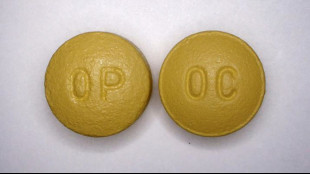 Purdue Pharma to be dissolved as US judge says to approve bankruptcy
Purdue Pharma to be dissolved as US judge says to approve bankruptcy
-
Iran's first woman orchestra conductor inspires

-
 Wood gets all-clear in boost for England
Wood gets all-clear in boost for England
-
Golf's world No. 8 Thomas has back surgery

-
 Rebooted Harlem museum celebrates rise of Black art
Rebooted Harlem museum celebrates rise of Black art
-
'Desperation in the air': immigrant comics skewer Trump crackdown

-
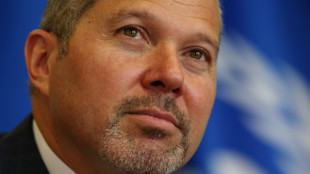 UN regulator says shipping still wants to decarbonize -- despite US threats
UN regulator says shipping still wants to decarbonize -- despite US threats
-
Grant, Kim share halfway lead in LPGA Annika tournament

-
 Musk's Grokipedia leans on 'questionable' sources, study says
Musk's Grokipedia leans on 'questionable' sources, study says
-
Trump signs order to lower tariffs on beef, coffee, other goods

-
 Croatia qualify for 2026 World Cup, Netherlands close, Germany in limbo
Croatia qualify for 2026 World Cup, Netherlands close, Germany in limbo
-
'Last Chance U' coach dies after shooting: US police

-
 Sinner completes perfect ATP Finals group stage, Auger-Aliassime reaches last four
Sinner completes perfect ATP Finals group stage, Auger-Aliassime reaches last four
-
Woltemade sends Germany past Luxembourg in World Cup qualifier


As world heats up, UN cools itself the cool way: with water
Deep in the bowels of the UN headquarters, a pump sucks in huge amounts of water from the East River to help cool the complex with an old but energy-efficient mechanism.
As more and more people want to stay cool in a planet that is steadily heating up, energy experts point to this kind of water-based system as a good alternative to air conditioning. But in many cases they are hard to set up.
The system has been part of the New York complex since it opened in the 1950s, chief building engineer Michael Martini told AFP during a tour of the cooling equipment.
The system, overhauled with the rest of the complex from 2008 to 2014, cools the UN center using less energy than a conventional air conditioning system. UN policy is to bring the air temperature down to about 24 degrees Celsius, or 75 degrees Fahrenheit.
In summer in New York, the river running beside the UN headquarters -- it is actually a salt water estuary -- stays much cooler than the surrounding air, which can reach 100 degrees. So cooling the building eats up less energy.
As many as 26,000 liters per minute (7,000 gallons) of water flow through fiber glass pipes to the complex's cooling plant, which uses it and a refrigerant gas to produce cold.
The system has two independent loops to prevent contamination of the water that flows back into the river at a higher temperature, said the head of the cooling system, David Lindsay.
Looking at the gleaming glass tower of the UN headquarters and the dome of the General Assembly, you would never know that the East River serves this purpose for the UN and is more than just part of the scenery.
The UN's New York headquarters is not its only building that depends on water.
In Geneva, its Palais de Nations features a cooling system that uses water from Lake Geneva. And the UN City complex in Copenhagen, which houses 10 UN agencies, depends on cold seawater that almost eliminates the need for electricity to cool the place.
This a huge benefit compared to the estimated two billion air conditioning units installed around a world.
- Why so rare? -
With the number of air conditioners due to increase so as to help people who are more and more exposed to dangerous temperatures, energy consumption for the purpose of cooling has already tripled since 1990, says the International Energy Agency, which wants more efficient systems.
Examples of these are centralized air conditioning networks using electricity, geothermal systems or ones that use water, like the UN complex in New York.
This latter system "has not been deployed as much as it should be for the issues we face today," said Lily Riahi, coordinator of Cool Coalition, a grouping of states, cities and companies under the aegis of the United Nations.
Some big organizations have been able to run such systems on their own, like the United Nations or Cornell University in New York State, which relies on water from Lake Cayuga.
But for the most part these systems require a lot of coordination among multiple stakeholders, said Riahi.
"We know it's technically possible, and we know actually there are many cases that prove the economics as well," said Rob Thornton, president of the International District Energy Association, which helps develop district cooling and heating networks.
"But it requires someone, some agent, whether it's a champion, a city, or a utility or someone, to actually undertake the aggregation of the market," he said.
"The challenge is just gathering and aggregating the customers to the point where there's enough, where the risk can be managed," Thornton said.
He cited Paris as an example, which uses the Seine River to run Europe's largest water-based cooling grid.
These networks allow for the reduced use toxic substances as coolants, and lower the risk of leaks.
And they avoid emissions of hot air -- like air conditioning units spew -- into cities already enduring heat waves.
But hot water from cooling units, when dumped back into rivers and other bodies of water, is dangerous for aquatic ecosystems, environmentalists say.
"This challenge is quite small, compared to the discharge from nuclear plants," said Riahi, adding the problem can be addressed by setting a temperate limit on this water.
Q.Jaber--SF-PST

